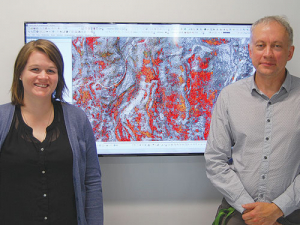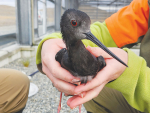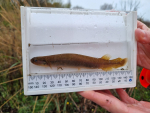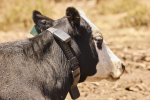Department of Conservation scientists are getting promising results from a pilot study aimed at pinpointing wilding pines from the air.
The method involves overflying an infested area in a fixed-wing plane carrying two cameras -- one multi-spectral and one standard high-resolution. Computer analysis of the combined images can then identify the pines by their spectral values.
It could lead to precision spraying of wilding pines from GPS-enabled helicopters.
DoC scientific officer Terry Greene says the project came out of his own long-time interest in aerial sensing, and it was “about time” the department took the plunge.
“We’re way behind the eight-ball compared with other countries and other organisations.”
The study was done on a 332ha rectangular block on a farm near Pukaki in the Mackenzie Basin.
Greene says it’s believed to be the first time the method has been used in New Zealand and the results look extremely promising. “We can find very small pine trees, in that sort of environment, at least.”
The project grew out of work Greene did with Hugh Robinson of Canterbury Aviation, who operates a Cessna aircraft with a vertical photography port in the rear fuselage. They successfully assessed wild bird populations using a standard high-resolution digital SLR camera.
For the wilding pines project, the plane was modified with a second port and a second camera supplied by a West Australian company specialising in multi-spectral photography for precision agriculture. That camera uses a system of filters to record at four discrete wavelengths.
Flying a computer-calculated flight plan over the ground, the cameras automatically record an overlapping mosaic of images which are later combined.
Showing off the resulting 3GB files, DoC geospatial analyst Ann De Schutter demonstrated how the pines could be detected by their spectral characteristics. False-colour representations showed live pines in red and dead pine foliage in yellow, both standing out from a monochrome background.
Greene says the project sought to answer two questions, “Are we identifying pines and not a whole heap of other stuff like briar and grass and everything else? And what is the smallest size we can detect for a given altitude?
“Obviously, we pleased there’s such a difference between living pines and dead ones. When you image it like that, it sticks out.
“The end game for all this is that we devise a tool such that this spatial information is plugged into a GPS onboard a helicopter with a boom spray apparatus. They fly directly to these trees, they spray them, the action of hitting the spray trigger changes the colour of those pixels to something to show they’re done, then it’s on to the next one -- instead of just randomly wandering across the landscape chewing up a lot of money on helicopters trying to find things.”
Greene says it could be very valuable in areas where the “infection front” of wilding pines is advancing, with a few very small trees scattered widely.
“We can direct them to places with very low densities of small trees that can turn into problems later.”
Greene reports interest from MPI, ECan and LINZ.











